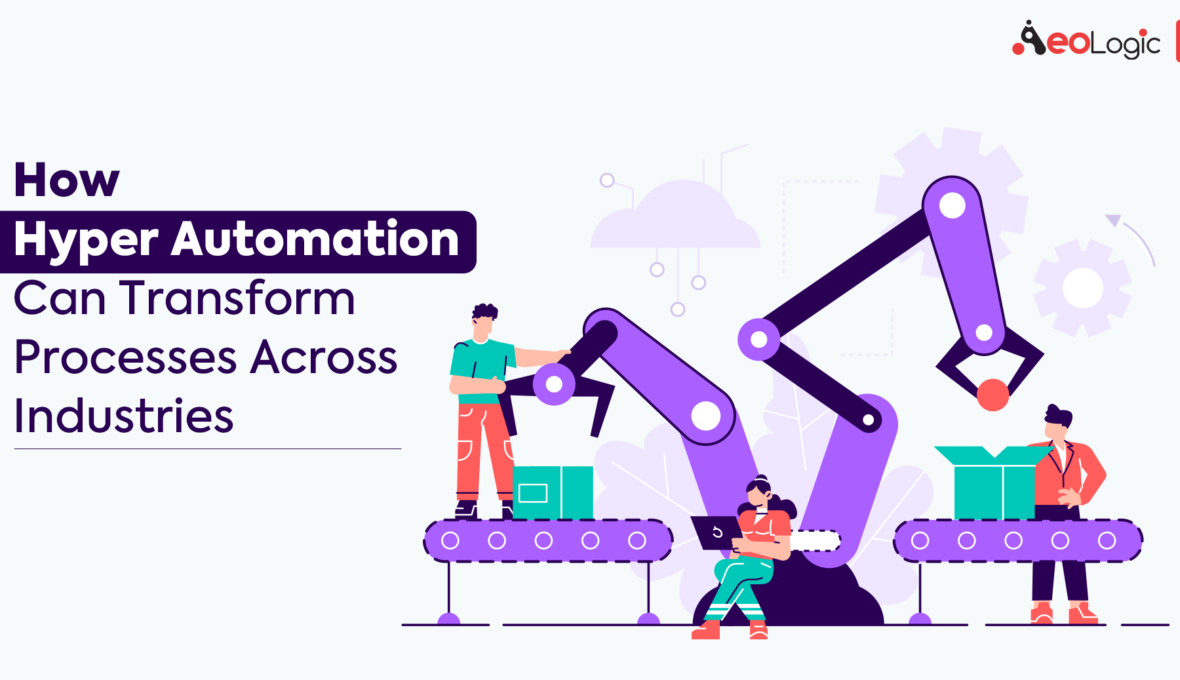Hyperautomation is the use of automation with a litany of different technologies, such as artificial intelligence (AI), robotic process automation (RPA), digital process automation (DPA), machine learning (ML), integration-platform-as-a-service (IPaaS) solutions and decision management systems, to optimize workflows.
Sean Chou, co-founder, and CEO of Catalytic explains, “In many ways, it’s an acknowledgment that the initial simplistic view of surface automation is insufficient for most real-world tasks,”. “Consequently, hyper-automation is the inevitable convergence of multiple categories driven by the fact that real-world processes are seldom neatly categorized into RPA, DPA, or IPaaS, and all could use a healthy dose of AI.”
According to Chou, hyper-automation allows employees to work in tandem with technology by augmenting existing workflows. It also drives digital strategies that provide value beyond time savings associated with traditional methods of automation. While technology handles the time-consuming administrative functions of a role, employees are free to focus on the parts of their job they’re passionate about, like strategy or people management. Not only does hyper-automation transform how we work and optimize productivity, but it also results in happier employees who are more engaged at work.
Benefits of Hyper-Automation
Workforce enablement:
Employees are able to automate many processes within their role, and get more jobs done, faster, with the resources available to them. Minimizing manual tasks enables them to focus on more impactful work, like planning and strategy.
Employee upskilling:
With automation no longer reliant solely on IT, any business user can become an automation leader within their own department, benefiting both tech and non-tech-minded employees.
Systems integration
With Hyper-Automation, a company’s advanced technology and data systems can communicate seamlessly with the power of integrations.
Digital agility
With all modes of automation working closely together, the business will step beyond a single technology’s one-off advantages to a state of true digital agility and versatility at scale.
Return On Investment
Businesses can monitor the exact ROI realized based on the automated processes, streamlined operations, and saved time and money on a weekly, monthly, and annual basis using key analytics. End-to-End process automation: automation alone can complete single and simple tasks. Intelligent automation can focus on entire processes that contain both structured and unstructured data.
The Impact of Hyper Automation Across Industries
Tools like RPA, Machine Learning, and Artificial Intelligence operating to automate complex business processes, Including where subject matter experts were once required. Hyper-Automation is a means for real digital transformation. The Hyper Automation Process has impacted a huge demographic across a vast number of industries.
Here are some examples that proves it:
1. Telecommunication — Automate Common Customer Requests
Many incoming messages from telecommunication customers are repetitive, often only requesting minor changes to their plan. Common requests include changes to address, removing a line from their service plan, or paying their bill, all small changes that add up to many hours.
Intelligent process automation with natural language processors (NLPs) can scan and determine the intent of an incoming customer message. Depending on the message content, it generates an automated reply, updates the customer’s existing plan automatically, or routes the message to the appropriate department.
2. Logistics and Supply Chain — Demand Prediction
Logistics companies are collecting mountains of data, much of which goes unused, such as average time to make a product, customer waiting times, and how much inventory is produced.
An intelligent process automation use case in this industry is pulling that data together to make predictions about consumer demands which logistics businesses can use to optimize their processes across the board and meet ever-changing demands.
3. High Tech — Churn Prediction
Many technology companies use a subscription-based pricing model that gives customers more flexibility, which also makes canceling subscriptions easier. Intelligent process automation can improve customer retention by alerting a tech sales rep of the churn risk of their customers before they decide to cancel their service.
Technology companies can implement a churn prediction intelligent process automation use case. Intelligent process automation platforms analyze customer behavior to find risk factors, then alert sales or service representatives of the churn risk and provide recommendations on how to keep that customer.
Conclusion
There is a false notion in people of tech or in general that Automation processes are deteriorating human jobs by reducing resources. Hyper-Automation does not mean the end of human resource jobs; rather, it will focus more on value-based roles. Providers of Data Analytics services understand that machine learning helps businesses stay abreast of competitors. Machine learning algorithms can more efficiently identify data patterns and trends and generate different scenarios.
This technology can increase productivity, save time, and reduce costs. It also makes Automation services effortless by eliminating possible human errors. The application is very useful to all leading content management solutions, healthcare organizations, and pharmaceutical companies running clinical trials, law firms, insurance companies, remote sales offices, and any other industry that processes a large number of forms every day.
Feel free to connect with us.
At AeoLogic Technologies, We combine our market research expertise across an array of technologies that help in building a better future. We’ve been carrying out qualitative and quantitative research projects for our clients for several years, establishing ourselves as the gold standard in reliable technical research.






